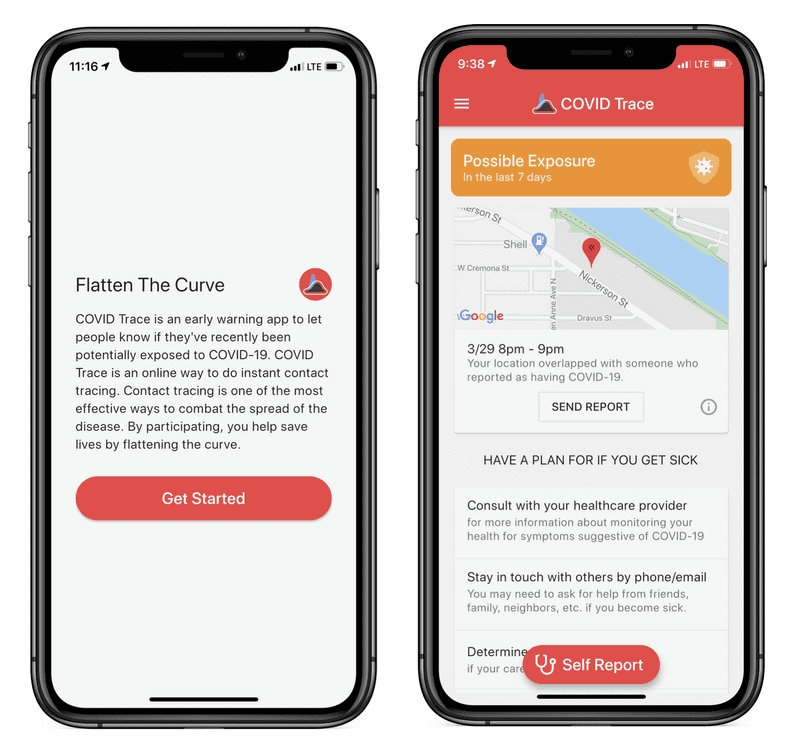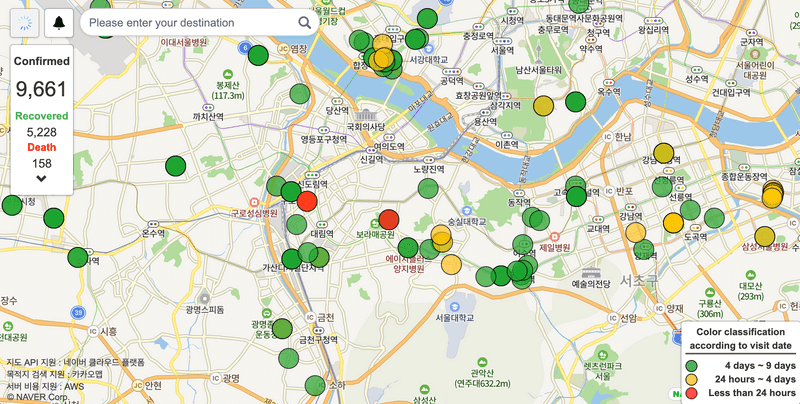Announcing COVID Trace
March 30, 2020
Today we’re announcing the COVID Trace app, a powerful way to warn people about exposure to COVID-19. COVID Trace is a scalable, automated contact tracing app that respects privacy.

We're working on releasing both the iOS and the Android version in their respective stores.
We need HELP
Apple has restricted COVID-19 related apps in the App Store that deal with private data to be published by Universities, Hospitals, or other established organizations/non-profits. This restriction by Apple is very sensible. It does mean that we can’t publish this app. We would love to work with an organization that meets the criteria. Please send an email to dudley@covidtrace.com or reach out on Twitter @dudley.
What is contact tracing?
Traditional contact tracing is an incredibly useful process of finding and isolating/treating all people exposed to an infected person. If done early enough and aggressively in an outbreak, it can stop an epidemic. It starts with tracing the steps of a person who has tested positive and then having investigators locate all of the people with whom they came into contact.
The following video describes the same process but for Ebola
The problem with traditional contact tracing is that it requires time and people and is a manual process. With the increased volume of cases, manual contact tracing does not scale.
Other websites show official and unofficial COVID-19 counts. How is COVID Trace different?
Many COVID-19 dashboards are displaying the number of cases and deaths locally and globally, and other apps and websites aggregate official reports as well as self-reported cases. An accurate count is vital to determine how officials act.
However, counts of current symptomatic people do not help us find and alert the next wave of infected people. With contact tracing, we can use location information gathered over three weeks to warn those who may have been exposed to COVID-19.
The COVID Trace app
On first use, the app steps you through the process of sharing your location and enabling notifications about exposures. After onboarding, the home screen has your current exposure status and helpful links to prepare and cope with COVID-19. From then on, the app will monitor your location and periodically check the time and place of possible exposures against your location data.
The most crucial feature of COVID Trace is alerting you about possible exposure. When you get an alert, it means that you and a person with COVID-19 were roughly in the same area in the hour identified. It could mean that you had a 15-minute conversation 3 feet apart with the symptomatic person. It could also mean that you were in the same place 45 minutes apart. You will have to judge your risk based on what you were doing at that moment in time.
We favor false positives (alert but no exposure happened) over false negatives (no alert, but exposure happened). The downside of a false positive is unnecessary protective action. The downside of a false negative is a missed opportunity to stop the spread of the disease.
Privacy
Both China and South Korea used digital contact tracing to help stem the tide of infections. China used mass surveillance of cell phone data and apps to figure out who might be infected. South Korea’s model determined the time and place of an infected person using their mobile phone and other data. That location history was then made available on a public website for others to see if they were exposed. Although highly effective, the models used by China and South Korea are distasteful to the majority of Americans, even mid-crisis.
Our goal was to find a solution that preserved privacy but balanced that with the public health need for information to combat the disease. We started with:
- Don’t ask for data you don’t need.
- Do as much on the phone as possible.
- Hold onto data for as little time as possible.
To help stick to those guidelines, we decided not to use any 3rd party tracking or authentication unless needed. By extension, COVID Trace will not include advertising.
So what information does COVID Trace transmit?
- If exposed, it will transmit the day and the city/town where it took place.
- When you self report, your location history for the past 3 weeks is anonymized and shared.
- When you self report, your answers to the symptom questionnaire are also transmitted and stored but are not associated with your location data.
What does that mean if I have the app and I happen not to be sick? COVID Trace will record and store only the last 3 weeks’ location history. Until you self-report, the data remains only on your phone. If the app alerts you to exposure, we will record the day and the city/town where the exposure occurred.
All of your data is kept on your phone unless you choose to share it to alert others. The data that is shared publicly is anonymized and devoid of unique identifiers.
It’s important to realize that perfect privacy and the information needed for digital contact tracing are in conflict with one another. Despite the tradeoffs, we’ve been thoughtful about preserving user privacy while offering an effective way to contact trace. In a follow-up post, we’ll share more about the privacy approach and implications of COVID Trace.
What’s next?
Later today or tomorrow we’ll publish details about the architecture of COVID Trace and as mentioned more details about the privacy when using COVID Trace. Over the coming days, we hope to share even more and as quickly as possible address questions and feedback.
